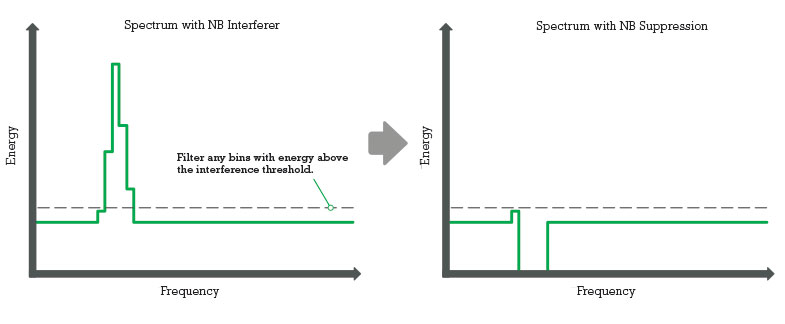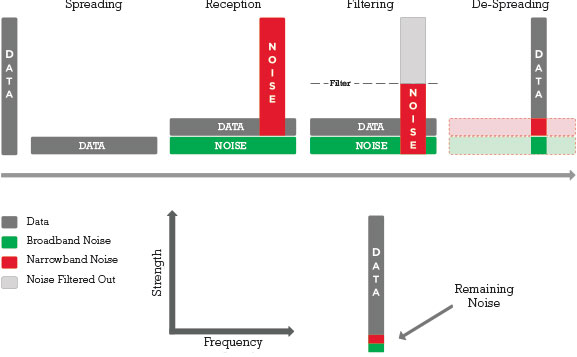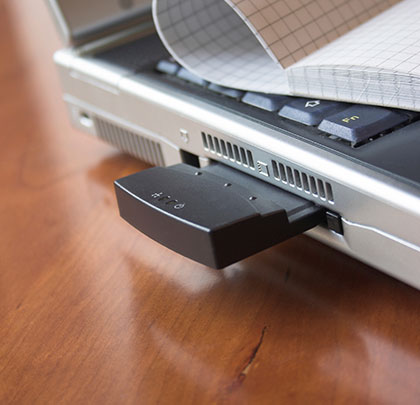Today, there are many mission-critical applications in industries such as oil and gas, utilities and precision agriculture that are heavily dependent on reliable data networks.
In many such applications, the use of cables and wires to connect devices and sensors to a central network infrastructure is either physically impossible or cost-prohibitive. To overcome these obstacles, companies often turn to unlicensed 900 MHz wireless solutions to connect devices over longer distances. However, these sometimes-harsh environments can present conditions that decrease reliability and hinder performance of wireless signals. For example, many oil and gas fields today are saturated with RF noise, which often leads to interference and data loss.
This white paper introduces and describes Digi’s patent-pending Punch2™ Technology, available exclusively on the Digi XLR PRO™ 900 MHz industrial radio, that provides reliable, long-range data communication in the most challenging wireless environments. This topic will be of interest primarily to engineers, IT managers and RF technicians who develop and deploy mission-critical, wireless systems in industrial settings.
PUNCH2 TECHNOLOGY
Punch2 Technology provides a more robust wireless communication system than is available in the market today. The technology leverages chirp spread spectrum (CSS) modulation to provide better receive sensitivity, multipath performance and interference rejection than is available through commonly used frequency hopping spread spectrum (FHSS) or direct sequence spread spectrum (DSSS) systems. The advantages of Punch2 Technology arise from the characteristics of the chirp signal as well as several digital-signal-processing techniques that enhance performance and reliability.
With Punch2 Technology, data is spread to a higher bandwidth by multiplying each transmit modulation symbol with a chirp signal. Operating at an expanded bandwidth provides several benefits:
- Greater receive sensitivity
- Interference immunity
- Improved multipath performance
- Widely adjustable data rates
The following sections provide an overview of the benefits of Punch2 Technology, including an explanation of the chirp signal and a deeper dive into benefits of this technology compared to FHSS and DSSS.

Figure 1: Linear Chirp Signal
WHAT IS A CHIRP?
A linear chirp is a signal that sweeps from one frequency to another as shown in figure 1.
1. Interference Immunity
Punch2 Technology uses frequency domain filtering techniques to suppress any narrowband interference that may be present in the operating channel from other radios. In addition to the processing gain afforded by chirp spreading, narrowband interference is further suppressed using frequency domain excision techniques. Figure 2 illustrates the suppression of interference.
The energy of the chirp signal is relatively flat across the wideband spectrum. In stark contrast, a narrowband interferer will rise significantly above the level of the wideband chirp signal. For example, an interferer with a bandwidth of 100 KHz and a signal level equivalent to the desired signal would have a spectral density that is 20 dB higher than the desired signal. An energy threshold is calculated above the spectral density of the chirp signal. Any energy above this threshold is assumed to be interference and deleted. Using this technique in combination with the processing gains, Punch2 Technology can suppress narrowband interference by up to 65 dB.

Figure 2: Narrowband Suppression
2. Higher Receive Sensitivity
Punch2 Technology leverages chirp spreading to deliver higher processing gains than other radio technologies, which leads to greater receive sensitivity. Figure 3 illustrates the spreading and de-spreading processes built into Punch2 Technology. This operation enables the radio to efficiently process signals while also filtering out narrowband noise.
During the de-spreading process, any signal that does not correlate with the chirp signal is filtered, primarily leaving the desired signal. A high-powered interfering signal, shown in red in the figure below, is de-spread by the chirp signal. The narrowband interference does not correlate with the chirp signal, and, consequently, the power of its signal is spread over the full bandwidth. As shown in figure 3, a much smaller portion of the signal now interferes with Punch2 Technology modulation symbols. The signal to interference ratio (SIR) of the de-spread signal is sufficiently high for recovery of the data even though the power of the interference exceeded the power of the desired signal.
Punch2 Technology uses a length 1024 chirp signal to spread the modulated symbols to a 9.6 MHz bandwidth. This provides an impressive processing gain of 30 dB when operating at the lowest data rate.

Figure 3: Spreading and De-Spreading Operations
3. Improved Multipath Performance
Multipath occurs when a radio signal travels along different paths, often bouncing off obstacles like trees or buildings, causing the signal to interfere with itself. Punch2 Technology uses a RAKE receiver architecture to coherently recover multipath signals. A receiver deploying this architecture aligns the phases of the multipath components such that they constructively combine. This helps the receiver not only accommodate severe multipath distortion, but also enhances receiver performance.
Many narrowband communication systems operating in the ISM bands employ frequency-hopping techniques to counteract multipath interference. The level of improvement depends on the hopping speed and the characteristics of the error correction used to mitigate the multipath. Radios operating in the 900 MHz ISM band typically hop at slower rates where the entire packet is transmitted at a single frequency. Therefore, any packets transmitted on channels experiencing deep fades are not received. By contrast, all packets transmitted using Punch2 Technology benefit from multipath recovery and, therefore, are more likely to be received error-free.
4. Widely Adjustable Data Rates
The Digi XLR PRO radio supports data-rate changes ranging from 9.38 Kbps–3.18 Mbps. A lower data rate can be used if interference is significant or the signal to be received is weak. This significantly improves the ability of the Digi XLR PRO to maintain communication in harsh RF environments.
All data rates use a common wide bandwidth signal for all data rate transmissions. The radio receiver acquires each frame identically regardless of rate, and detects the rate based on the characteristics of the preamble.
PUNCH2 TECHNOLOGY VS. FHSS
Many radios in the unlicensed 900 MHz band use frequency hopping spread spectrum (FHSS), which transmits data at multiple frequencies using a hopping pattern. The transmitter hops among different frequencies to combat fading and interferers. The channels may have different levels of interference and fading, allowing communication on some channels but not others. The diversity of operating at multiple frequencies results in improved communication reliability.
Conversely, Punch2 Technology uses a wide bandwidth for each bit of information that is transmitted. With this method, each bit of information leverages frequency diversity across the band—as opposed to the hit-and-miss approach of FHSS with individual packets.
Compared to FHSS, Punch2 Technology provides superior resistance to signal fading without resorting to frequency hop synchronization. It also requires no beacon frames or time synchronization frames, resulting in decreased network traffic.
PUNCH2 TECHNOLOGY VS. DSSS
Another popular modulation for radios operating in both 900 MHz and 2.4 GHz bands is direct sequence spread spectrum (DSSS). With this method, data is transmitted by multiplying data bits by a very fast pseudo-random bit pattern (PN sequence) that “spreads” the data into a large coded stream that takes the full bandwidth of a channel.
Punch2 Technology offers many of the same benefits as DSSS, such as multipath recovery and immunity to narrowband interference, as well as additional benefits due to the characteristics of the chirp signal. Unlike a DSSS signal, a chirp signal fully correlates regardless of the amount of phase shift across the symbol. This leads to higher processing gains and receiver sensitivity. Punch2 Technology also includes a lower peak-to-average RF signal compared to DSSS, which leads to reduced power amplifier requirements, reduced transmit current, and improved narrowband interference immunity.
CONCLUSION
For wireless data communications in mission-critical applications, the reliability of each link is critical to the long-term success of the network. Punch2 Technology enables the Digi XLR PRO 900 MHz industrial radio to achieve unparalleled range of 100-plus miles, industry-leading receive sensitivity and interference immunity, and reliability in harsh RF environments. ◆
Aaron McNally is the market development manager for Digi International. Digi provides the industry’s broadest range of wireless products, a cloud computing platform tailored for devices, and development services to help customers get to market fast with wireless devices and applications. For more information, call 877.912.3444 or visit www.digi.com.
____________________________________________
MODERN PUMPING TODAY, May 2015
Did you enjoy this article?
Subscribe to the FREE Digital Edition of Modern Pumping Today Magazine!
![]()


